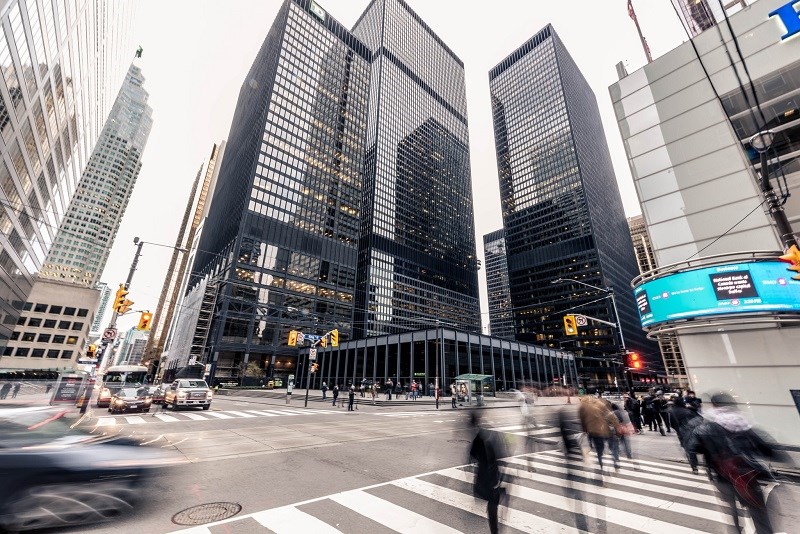
Stuart Kedwell, manager of the Gold-rated RBC Canadian Dividend mandate, uses a scenario-based investment approach, and is historically positioned to handle inevitable market swings.
“We ask ourselves,” says Kedwell, “what could happen to this business if things were going really good, if things were average, and if things were really bad.” He hasn’t stressed the holdings for COVID-19 per se but has done so for a variety of different economic outlooks.
Once the different market scenarios have been factored in, and meetings held with business management teams, the team assesses valuations by considering the current level of interest rates. The portfolio managers also look at historical valuations to create a matrix of share-price outcomes for each business at a given point in time.
The fund is positioned for investors seeking tax-efficient income in a non-registered plan with a long-horizon view. Essentially all 80 holdings are heavily focused on Canadian dividend-paying companies. The initial screening process starts with a fundamental quantitative and qualitative analysis.
“If we’ve done that first selection process well for reasonable businesses, those businesses will compound capital in the 7% to 9% range over a very long period. That’s the goal,” Kedwell says. He is a senior vice president, senior portfolio manager and co-head of North American Equities at RBC Global Asset Management in Toronto. He co-manages the dividend fund with Doug Raymond.
The managers look for a combination of current yield and dividend growth, which Kedwell notes is very important for inflation protection over long periods of time and for driving the purchasing power of the portfolio.
At different stages and scenarios, one business may do well while another sells off. “For example, if you have two businesses that before COVID-19 were within $5.00 of each other from a share price standpoint and two weeks later they’re priced $30.00 apart, that’s an opportunity to take a little bit from one and feed it to the other,” Kedwell says. The average portfolio turnover is normally around 30%.
The broad research team includes over 20 individuals, including analysts and portfolio managers. Kedwell notes that both he and Raymond have invested in the fund since inception, making them aligned with their clients.
“The worst thing that happens in a mutual fund’s relationship,” says Kedwell, “is when something happens at the wrong time in the market. The investor is spooked, not just by the markets, but also by the investment manager. That’s not to say that there’s not going to be volatility in the markets. But we don’t want to be of any incremental harm during that negative period of time.”
Sectors and Stocks in Focus
The high 43% weighting in financials is characteristic of the mandate, because of the focus on quality companies with growing dividends. Also characteristic is the Canadian banks among the top 10 holdings, such as the Royal Bank of Canada (RY), The Toronto-Dominion Bank (TD), Bank of Nova Scotia (BNS), and Bank of Montreal (BMO).
After the pain of the market sell-off in March, what becomes very important is that none of the banks appear to need common equity at this juncture. According to Kedwell, capital provisions are much stronger than during the global financial crisis and the banks also have the earnings to deal with deferred loans. “The number of shares outstanding won’t change, and when the earnings recover we should get most of the benefit. Admittedly, it could take until 2022 or even 2023 to see their old earnings power again,” Kedwell notes.
To mitigate risk among the predominant bank weightings, the stock selection criteria includes strong balance sheets, cash flow, very strong capital ratios, and the ability to withstand even unprecedented events like the ones we’re seeing today. For further risk protection among the financials, the fund holds positions like Brookfield Asset Management Inc. (BAM.A), a good compounder of capital over time.
The energy sector represents about 17% of the fund and about 50% of that weighting is invested in pipeline and mid-stream companies. To reduce risk, the investment team are particularly wary when it comes to oil and gas production because of the cyclicality of the sector. Suncor Energy Inc. (SU) and Imperial Oil Ltd. (IMO), both held in the fund, are favoured for their long reserve life.
Responsible investing is emphasized and environmental, social and governance (ESG) factors are an integral part of the investment process. In the case of holdings in oil companies, the investment managers meet with businesses to understand how the carbon intensity of their businesses will decline over time.
For other businesses, Kedwell says you need to have discussions with management about what happens when the economy slows – which revenue line drops first, which one drops second, and how the companies will readjust their costs in those circumstances.





















